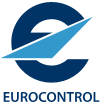The costs of ATM in Europe became disconnected from traffic around 2008

National air traffic management (ATM) organisations need to provide sufficient capacity in their respective airspace so that growing traffic can be handled safely. To do that they incur costs, for staff and infrastructure etc. Airlines pick up the costs through 'en route' and airport charges, so that in the end the passenger, or the shipper of freight, pays.
The chart shows the total costs incurred by the ATM organisations of 25 States over the last 22 years to provide ‘en route’ ATM. These are all of the States that were in the route charges system in 1998 and subject to the Single European Sky legislation in 2019. They accounted in 2019 for 88% of costs in the EUROCONTROL area and 80% of the traffic.
Between 1998 and 2009, costs grew by 36% from €5.2Bn to €7.1Bn. Meanwhile traffic had grown by 52% to a peak in 2008, before falling back after the economic crisis. So, while costs had been growing roughly in line with traffic growth, there were signs of efficiency savings, because costs per unit of traffic were falling slightly.
These States are subject to the EU Performance Scheme, which in 2012 ushered in a new method of cost-sharing between ATM organisations and aircraft operators. The aims were to manage the growing costs of ATM, while delivering more capacity safely and with the least impact on the environment.
Traffic certainly continued to grow: by 2019 it was up another 29% over the 2008 peak. But costs and traffic were no longer in lock-step. Costs essentially stayed constant at just under €7Bn for these States for 11 years. The catch to this disconnect is that, when traffic dropped last year to pre-1998 levels, due to COVID, costs did not.


.png)




.jpg)

Comments
There are no comments yet for this item
Join the discussion